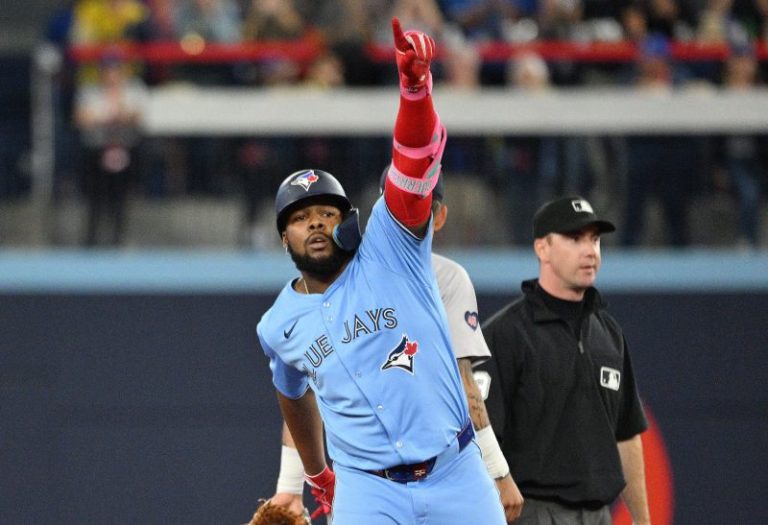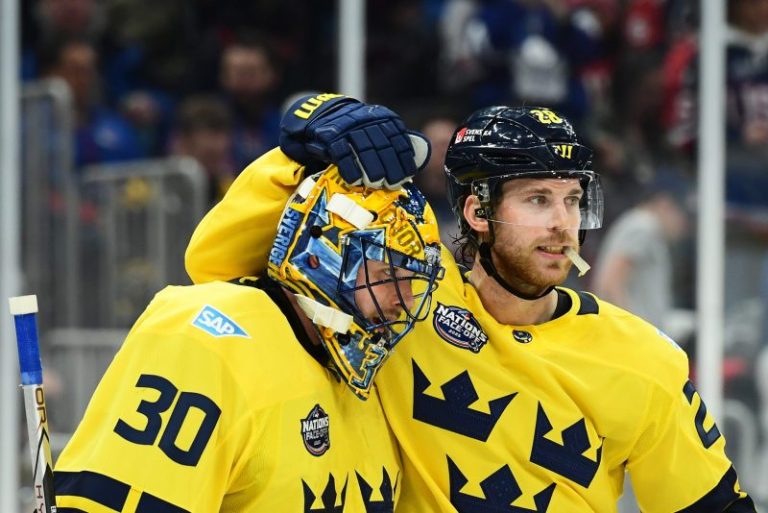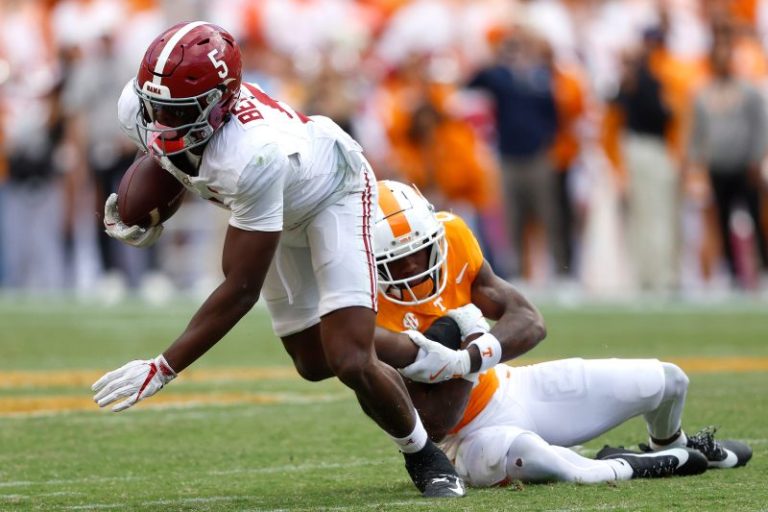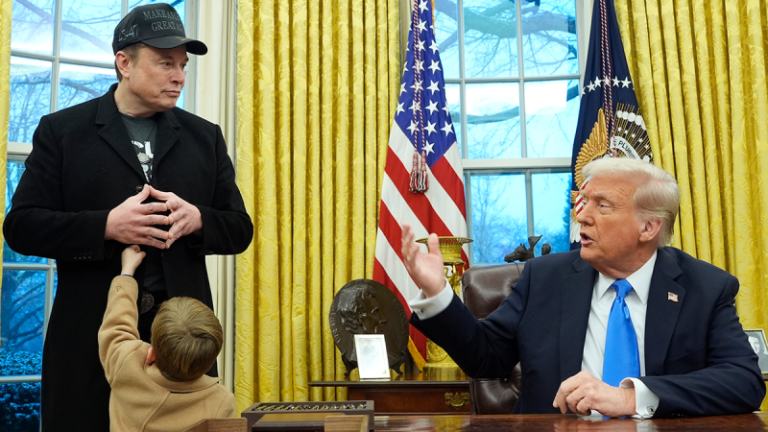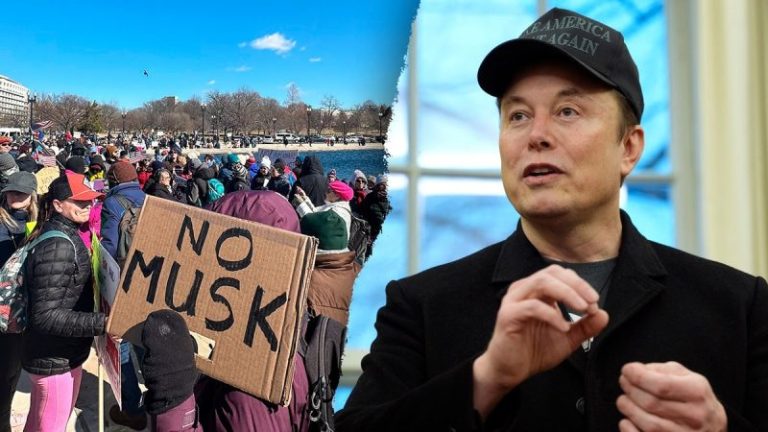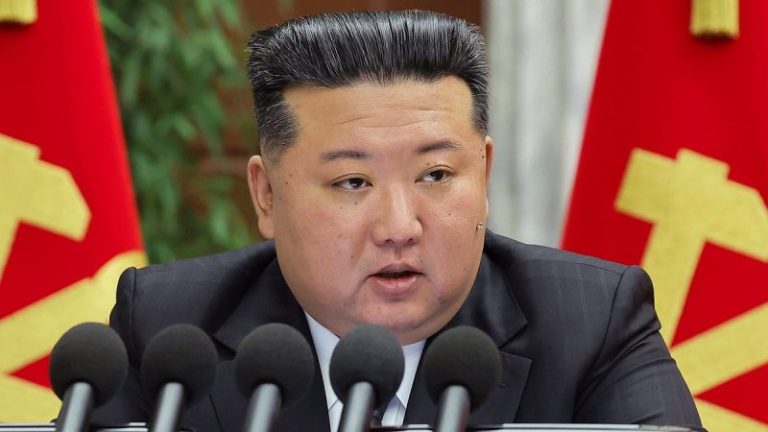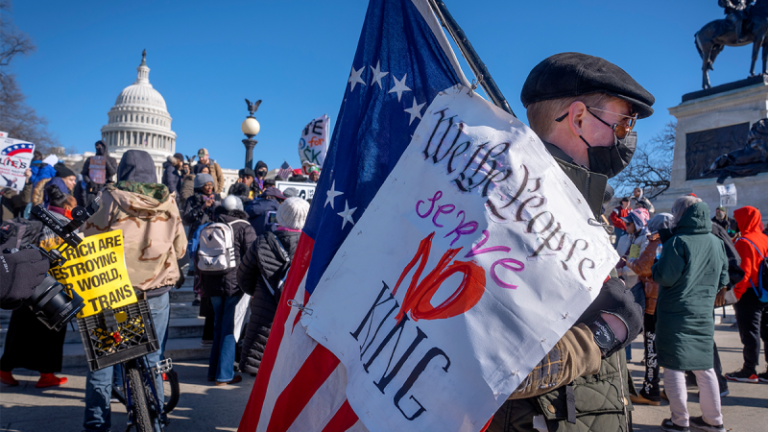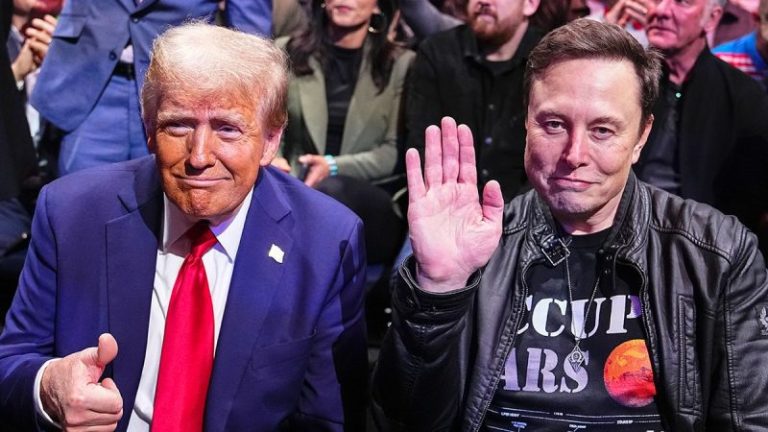Team USA lost its first game of the 4 Nations Face-Off on Monday night and also lost a key forward.
Sweden rallied from an early 1-0 deficit to defeat the short-handed Americans 2-1 and pick up its first win of the tournament. It was also the USA’s first loss.
Gustav Nyquist and Jesper Bratt scored in the first period after Chris Kreider gave the USA a 1-0 lead 35 seconds into the game. Samuel Ersson made the lead stand up with 32 saves.
The game didn’t matter because a USA-Canada final had already been determined when the Canadians beat Finland in regulation earlier in the day.
But the USA lost Brady Tkachuk after he slid hard into the net. He went to the dressing room, played one shift after returning then was ruled out in the second period for ‘precautionary reasons.’
The Americans, who opened the tournament 2-0, are dealing with injury issues. Matthew Tkachuk missed the game with a lower-body injury, Captain Auston Matthews was a late scratch and defenseman Charlie McAvoy also sat out.
The USA hopes to be healthier when it plays Canada in the championship game on Thursday (8 p.m. ET, ESPN).
Here is a recap and highlights from Monday’s USA-Sweden and Canada-Finland games:
USA-CANADA FINAL: What to know | Odds
What USA coach Mike Sullivan said about injuries
USA coach Mike Sullivan gave an update on Brady Tkachuk and other injured players during his postgame news conference.
‘We held him out more for precautionary reasons at that point,’ USA coach Mike Sullivan told reporters about Brady Tkachuk’s lower-body injury. ‘I haven’t gotten an update to this point after the game yet, but we’ll see how it responds, but I don’t anticipate it being an issue.’
He also said he hoped to have more answers on Auston Matthews’ and Charlie McAvoy’s upper-body injuries on Tuesday.
The Boston Globe reported that McAvoy was admitted to Massachusetts General Hospital with his injury.
Sweden vs. USA highlights
Final score: Sweden 2, USA 1
The USA can’t connect with their goalie pulled and Sweden pulls out a 2-1 victory for their first win of the tournament. The USA is 2-1 in the round robin and finished with a tournament-best six points.
USA pulls goalie
Jake Oettinger is pulled for an extra skater. USA takes a timeout. Sweden ices the puck with 1:08 left.
Brock Nelson stopped
Brock Nelson has a breakaway but Samuel Ersson gets his blocker on Nelson’s shot.
USA on power play
Erik Karlsson high-sticks Jake Guentzel after Jack Hughes gets a couple chances in close. Sweden kills off the penalty as Gustav Forsling breaks up a pass on a 2-on-1 effort.
Big check by Jack Eichel
Jack Eichel lays his shoulder into Leo Carlsson’s shoulder and the Anaheim Ducks forward’s helmet goes flying.
Third period underway
USA takes a quick penalty (Adam Fox for cross-checking) but kills it off. Sweden is 0-for-3 on the power play.
End of second: Sweden 2, USA 1
No scoring in the period and no Brady Tkachuk. The Team USA forward was hurt in the first period and didn’t return. Vincent Trocheck did play after leaving in the first. Swedish goalie Samuel Ersson, an unexpected starter because of Linus Ullmark’s illness, has 20 saves through two periods.
USA on the power play
Filip Forsberg is called for slashing Kyle Connor. Jack Eichel hits the post and Sweden kills it off.
Brock Nelson robbed
Brock Nelson is all alone in front, but Samuel Ersson makes a big save. Nelson knocks over the goalie afterward.
Brady Tkachuk ruled out of game
Brady Tkachuk, who slid hard into the net in the first period, won’t return to the game. He went to the dressing room and skated one short shift after returning.
Sweden on the power play
Noah Hanifin is called for hooking Viktor Arvidsson. USA kills it off.
Second period underway
Brady Tkachuk is not on the bench. Vincent Trocheck has returned.
End of first: Sweden 2, USA 1
If the goal of the USA was to improve to 3-0 and stay healthy, it’s not a good start. The start looked great at first because Chris Kreider scored 35 seconds into his first game of the tournament. But Gustav Nyquist and Jesper Bratt gave Sweden the lead before the period ended. Worse news: Brady Tkachuk appears to be hurt, and Vincent Trocheck left the game late in the period. The USA started the game with 11 forwards, so they could be really short now depending on their availability in the second period.
USA-Sweden score: Jesper Bratt gets goal
Jesper Bratt takes a pass from William Nylander and rips a shot past a screened Jake Oettinger. Great release. Sweden 2, USA 1
Brady Tkachuk returns to the game
Brady Tkachuk returned to the bench and got in the game. His shot is stopped by Samuel Ersson and Tkachuk immediately skates to the bench. He’s still there.
USA-Sweden score: Gustav Nyquist ties it up
Gustav Nyquist beats Jake Oettinger with a deflection of an Erik Karlsson shot to tie the game. USA 1, Sweden 1
Sweden on the power play
Matt Boldy is called for interference six seconds after the USA’s power play ends. The Americans kill it off.
USA on the power play
Elias Lindholm is called for delay of game. Sweden kills it off.
Brady Tkachuk not on the bench
He lost his balance, slid into the net and grimaced when he got up. He took another shift, but TNT reports that he is not on the bench.
Brady Tkachuk throws big hits
Brady Tkachuk hasn’t fought early like he did against Canada. But he has thrown big hits on Lucas Raymond and Leo Carlsson.
USA-Sweden score: Chris Kreider gets goal
Chris Kreider scores 35 seconds into the game on a rebound of a Zach Werenski shot. Jack Eichel gets the secondary assist. Kreider and Eichel played college hockey in Boston. USA 1, Sweden 0
Game underway
Can the USA finish 3-0 in the round robin at the 4 Nations?
How to watch United States vs. Sweden 4 Nations Face-Off game
Date: Feb. 17
Time: 8 p.m. ET
TV: TNT, truTV
Streaming: Sling and MAX
USA, Sweden starters
USA: Forwards Jack Eichel, Brady Tkachuk and Chris Kreider; defensemen Zach Werenski and Noah Hanifin; goalie Jake Oettinger
Sweden: Forwards Elias Lindholm, Lucas Raymond and Adrian Kempe; defenseman Erik Karlsson and Gustav Forsling; goalie Samuel Ersson
Matthew Tkachuk, Auston Matthews, Charlie McAvoy and Connor Hellebuyck are the U.S. scratches.
Rickard Rakell, Mika Zibanejad and Linus Ullmark are Sweden’s scratches.
No Auston Matthews for Team USA
Team USA captain Auston Matthew is dealing with upper-body soreness, so he won’t play, per The Athletic. The USA will go one man short with 11 forwards and six defensemen.
Team USA lineup changes
According to NHL.com, forward Chris Kreider will go in the lineup for Matthew Tkachuk (lower-body injury). Defenseman Jake Sanderson will sub in for Charlie McAvoy (upper body). Kreider and Sanderson are making their tournament debuts. Jeremy Swayman will back up Jake Oettinger as No. 1 goalie
Report: Samuel Ersson to start in net for Sweden
Swedish publication Aftonbladet says Linus Ullmark is ill so Samuel Ersson will get the start. The Philadelphia Flyers goalie will be making his first appearance. He was an injury replacement for Jacob Markstrom.
Canada vs. Finland highlights
Final score: Canada 5, Finland 3
There will be a rematch of the high-intensity USA-Canada game in the 4 Nations Face-Off final.
Canada survived a late scare to defeat Finland 5-3 in Monday’s round-robin finale and give it five points in the tournament. The Canadians hold the tiebreaker against Sweden, so they will face the Americans on Thursday in the championship game.
The United States beat Canada 3-1 in Saturday’s game, which featured three fights in the first nine seconds of the first period.
Canada rebounded Monday with a big game from its stars after shuffling its lines. Nathan MacKinnon scored twice, Connor McDavid had a goal and assist, and Sam Reinhart had three assists. Sidney Crosby set up MacKinnon’s second goal and had a key goal.
Finland scored three times in the last seven minutes, including two quick goals by Mikael Granlund, to cut the deficit to 4-3. Crosby put the game away with an empty-netter.
Canada-Finland score: Sidney Crosby gets empty-netter
That relieves the pressure on Canada. It’s Crosby’s second point of the game and first goal of the tournament to go along with four assists. Canada 5, Finland 3
Canada-Finland score: Mikael Granlund strikes again
It’s his second goal in 23 seconds. Canada 4, Finland 3
Canada-Finland score: Mikael Granlund gets goal
Mikael Granlund scores with 2:40 left. Canada 4, Finland 2
Aleksander Barkov blocks Nathan MacKinnon
Nathan MacKinnon shoots for the empty net for a hat trick but Aleksander Barkov blocks the attempt.
Finland pulls its goalie
Juuse Saros goes to the bench for an extra skater.
Canada-Finland score: Finland gets on board
Good passing by Finland on a cycle. Esa Lindell ends up with the puck and beats Jordan Binnington with a shot off the far post with 6:41 left. Canada 4, Finland 1
Midway through the third period
Still 4-0 Canada. Not much sustained attack from either side. Juuse Saros took a shot off the mask but is fine.
Third period underway
Canada needs to hold this lead to advance to the final.
End of second: Canada 4, Finland 0
Canada knocked Finland goalie Kevin Lankinen out of the game with a Nathan MacKinnon goal early in the second period. Juuse Saros has stopped all six shots he has faced, but Finland needs to generate more on offense. They had a couple shots on the power play and 12 overall in the period, but Jordan Binnington was perfect again.
Finland goes on power play
It’s the first penalty of the game as Devon Toews slashes Joel Armia. With 4:35 left in the second period, Finland needs to connect here. It doesn’t as Canada kills it off.
Juuse Saros stops Sidney Crosby
Finland goalie Juuse Saros gets his first big chance against since entering the game. He stops Canada captain Sidney Crosby from in close. Still 4-0 Canada.
Finland makes goalie change: Juuse Saros in
Juuse Saros is the net for the first time since losing 6-1 to the USA in the opener. Kevin Lankinen gave four goals on 13 shots.
Canada-Finland score: Nathan MacKinnon gets goal
Nathan MacKinnon scores his second goal of the game. Sidney Crosby makes a quick pass to MacKinnon after getting the puck from Sam Reinhart. That’s two points now for MacKinnon, Reinhart and Connor McDavid in the game. Canada 4, Finland 0
Second period underway
Kevin Lankinen remains in net for Team Finland.
End of first period: Canada 3, Finland 0
Canada shuffled its lines to get its offense moving and so far it’s working. Connor McDavid has a goal and an assist. Brayden Point, who was moved up to McDavid’s line, has a goal. Nathan MacKinnon has scored. Jordan Binnington has faced only five shots but looks solid. Cale Makar, who has returned from an illness, has played more than eight minutes. If Canada holds the lead, it goes to the final.
Canada-Finland score: Brayden Point gets goal
Brayden Point scores on a rebound of a Travis Sanheim shot to make it 3-0 at 13:02. Connor McDavid started the rush and picks up his second point of the game. Canada 3, Finland 0
Canada goalie Jordan Binnington solid early on
Canada needs a big game from Jordan Binnington to advance. He started with a strong shoulder save on Mikael Granlund and looks good so far.
Canada-Finland score: Nathan MacKinnon gets goal
Nathan MacKinnon uses his speed to get in alone on Kevin Lankinen after a pass from Sam Reinhart. MacKinnon scores 46 seconds after Connor McDavid had given Canada the lead. Canada needed a big game from its top players and has it so far. Finland calls a timeout. Canada 2, Finland 0
Canada-Finland score: Connor McDavid gets goal
Connor McDavid takes advantage of a giveaway by Roope Hintz, circles and rips a shot past a screened Kevin Lankinen. Canada 1, Finland 0
Game underway
If a team wins in regulation, it reaches the final. Finland is the home team and gets the last line change.
Cale Makar to play, start for Team Canada
Canada defenseman Cale Makar is in the starting lineup in Monday’s game against Finland. He had missed the last game against the USA because of illness.
When is Finland vs. Canada and USA vs. Sweden at the 4 Nations Face-Off?
Finland and Canada play at 1 p.m. ET at Boston’s TD Garden. Sweden and the USA play at 8 p.m. ET.
How to watch Finland vs. Canada and USA vs. Sweden
Both games will be broadcast on TNT and truTV.
How to stream Finland vs. Canada and USA vs. Sweden
Projected Canada lines
Forward Seth Jarvis, defenseman Thomas Harley and goalie Sam Montembeault are the scratches.
Projected Finland lines
This lineup would mean forward Teuvo Teravainen, defenseman Juuso Valimaki and goalie Ukko-Pekka Luukkonen would be the scratches.
Cale Makar taking pregame warmup
Canada defenseman Cale Makar is on the ice for the pregame warmup. He had missed the USA-Canada game with illness and is a game-time decision.
Jordan Binnington to start for Team Canada
St. Louis Blues goalie Jordan Binnington will get his third consecutive start for Team Canada at the 4 Nations Face-Off, per reports. He is 1-1 at the tournament with a 2.46 goals-against average and .896 save percentage.
Kevin Lankinen to start for Team Finland
Vancouver Canucks goalie Kevin Lankinen will get his consecutive start for Team Finland. He beat Sweden in the second game and has a 2.91 GAA and .875 save percentage.
Report: USA’s Matthew Tkachuk won’t play Monday
NHL.com is reporting that USA forward Matthew Tkachuk won’t play against Sweden because of a lower-body injury. Tkachuk played only three shifts in the third period Saturday and spent the rest of the period on the bench.
Jake Oettinger will start for Team USA vs. Team Sweden
4 Nations Face-Off schedule, TV
(Times p.m. ET)
Wednesday, Feb. 12: Canada 4, Sweden 3 (OT)
Thursday, Feb. 13: USA 6, Finland 1
Saturday, Feb. 15: Finland 4, Sweden 3 (OT)
Saturday, Feb. 15: USA 3, Canada 1
Monday, Feb. 17: Canada 5, Finland 3
Monday, Feb. 17: Sweden 2, USA 1
Thursday, Feb. 20: USA vs. Canada, championship game at Boston, 8, ESPN
We occasionally recommend interesting products and services. If you make a purchase by clicking one of the links, we may earn an affiliate fee. USA TODAY Network newsrooms operate independently, and this doesn’t influence our coverage.
This post appeared first on USA TODAY

